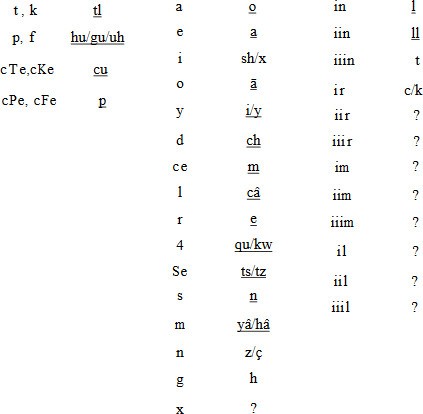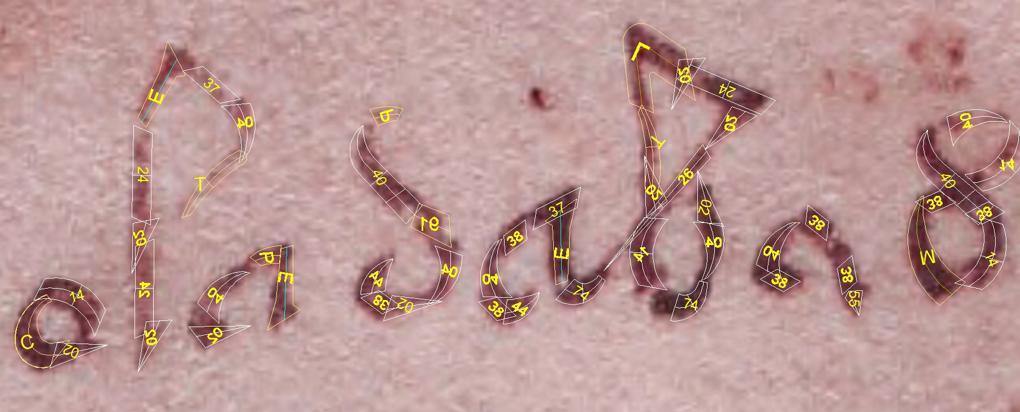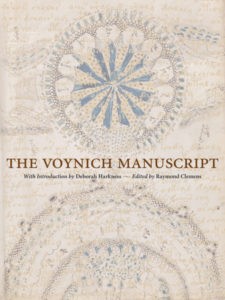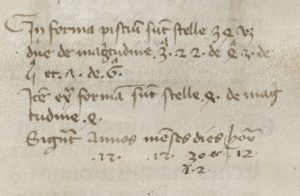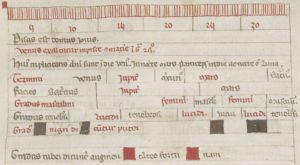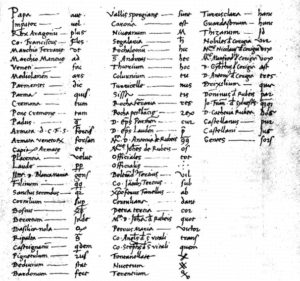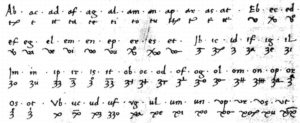Like it or not, we find ourselves completely surrounded by Bad Voynich Theories: this is an unfortunate (and often dispiriting) state of affairs, and one that seems unlikely to change any time soon.
Having said that, everyone is entirely free to pursue their own foolish Voynich theory (though it sometimes seems as though this is close to becoming obligatory). But as long as you’re only wasting a small amount of your own time, that’s essentially fine, because you’ll probably learn a load of interesting stuff along the way. And if you can (eventually) get to the point where you truly understand the basic mistake that set you on the wrong track (and can actually accept it), you’ll probably have stretched your mind in an overall positive way.
However, the one thing that takes a Bad Voynich Theory and turns it into an outright tragedy is when it starts to gain followers – people who have no inkling of the basic historical/logical error the original theorist has almost certainly made. For if there are (say) a thousand Voynich theories out there (and the smart money is surely on the actual figure being a fair bit higher), that means that at least 999 of them are wrong: or, put another way, the chances of a randomly picked Voynich Theory being correct is no more than 0.1%.
I’ve written before that I think Tucker & Talbert’s “New Spain / Nahuatl” Voynich theory is demonstrably wrong, but their camp has now acquired a new ally who wants to take those ideas much further….
“The Annotated Voynich Codex”
Jules Janick at Purdue University has picked up Arthur O. Tucker’s Mesoamerican baton and done his best to hurtle forward down the same track with it. According to his freshly-minted Voynich project page (a longer PDF version including Janick’s transliteration tables and working examples of plant decryptions is here):
The two botanists who have published papers in refereed journals (Hugh O’Neil, 1944 and Arthur O. Tucker, 2013) have observed the presence of only New World plants. Tucker has demonstrated that this is a MesoAmerican codex based on identification of plants, animals, a mineral, language symbols, and heliocentrism.
(Of course, he means “Hugh O’Neill” here. *sigh*)
Subsequent analysis by Tucker and Jules Janick have demonstrated a direct connections to colonial Mexican history including illustrations of landmarks and cities and an allusion to the establishment in 1530 of the Celestial City of Jerusalem (Puebla de los Angeles) by the Franciscan friar Toribio of Benvente known as Motolinía (1482–1568). All our research to date indicates that the Voynich is a 16th century codex associated with indigenous Indians of Nueva España educated in schools established by the Spanish.
(He means Toribio de Benavente here, who arrived in New Spain in May 1524.)
Janick believes that the Voynich’s pharma section offers so many labels of herbs and plants that it can be used as a ‘Rosetta Stone’ for decrypting Voynichese. I’ve cut-and-pasted his transliteration table (below) into a form that Voynich researchers can quickly make sense of (note that I’ve given EVA t/k pride of place at top left, because it is the ‘tl’ from which every single Nahuatl Voynich theory ultimately seems to spring):
With the Voynich Manuscript so comprehensively solved, we should all now decamp to the bar for tequila shots (surely the only sensible way of ingesting agave), right? Well… no, not just yet. Janick continues:
However, the bulk of the manuscript defies translation, and it appears that a dialect or lost language associated with Classical Nahuatl is involved. This is being pursued. We are convinced that the Voynich codex is a document produced by Aztec descendants that has been unfiltered through Spanish editors. As such, we believe it may be a critically important manuscript to colonial Mexican history.
So despite the fragments of Voynichese that seem to be Nahuatl (if you squint at them in just the right way), there are huge sections of the text (I’m guessing this means 99% of the text) which even Janick’s clever transliteration table still makes no sense of. But to give him his dues, he would still appear to be several times further forward than Stephen Bax ever managed (numerically speaking, that is). 🙂
Puebla de los Angeles
Despite these significant (and, I suspect, insurmountable) linguistic shortcomings, Janick, Ryba & Tucker seem pretty convinced about their interpretation of the Voynich’s infamous nine-rosette page. Here’s a link to their paper Voynich Diagram 86v: An Interpretation, which excitedly concludes:
Page 86v of the Voynich Codex is a complex figure that involves two concepts: (1) a kabbalistic sephirothtic Tree of Life, and (2) a map associated with Puebla de los Angeles, the New Celestial City of Jerusalem established by the Franciscan Friars including Motolinia. It includes four encircling cities, Huejotzingo, Tlaxcalla, Tecamachalco, and Zempoala (Cempoala) Vera Cruz, all mentioned by Motolinia. The diagram is evidence that the artist of the Voynich Codex was involved with Catholic mysticism linked to Jewish kabbalah.
So… yet another nine-rosette spatial decryption to place atop what is already a tall and teetering pile. Anyone got a box of matches? The weather’s suddenly turned cold here and… (you know the rest).
Your Chance To Meet Jules Janick!
Regardless, if you’re just as excited as Janick et al. seem to be about this (and I can assure any disbelieving Cipher Mysteries readers that there are plenty of Voynichese/Nahuatl devotees out there) and can haul your sorry ass over to West Lafayette in Indiana this coming Wednesday lunchtime (21st September 2016), the very distinguished Jules Janick himself will be giving a talk on all this at Purdue University, hosted by the Jewish Studies Program:
Wednesday, September 21 ~ Beering Hall, Room B222 ~ 12:30
Jules Janick, James Troop Distinguished Professor of Horticulture, Department of Horticulture and Landscape Architecture, Purdue University, “A Kabbalah Sephirothic Tree, the New Jerusalem, and the Voynich Codex: Understanding a Bizarre 16th Century Manuscript of New Spain”
Personally, I think the probability that the Voynich Manuscript originated in New Spain is so close to zero that your desktop calculator would have to switch into scientific notation to display it. But given that nobody gives a monkey’s about what I happen to think, all I can say is: it is what it is.
